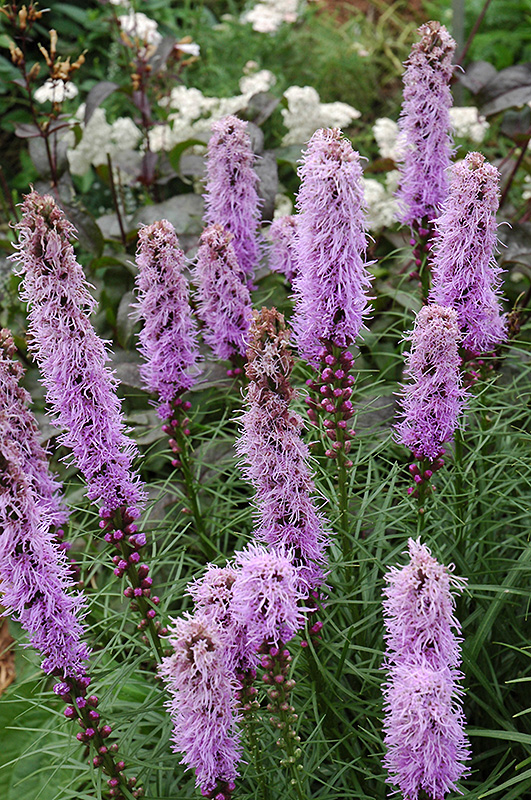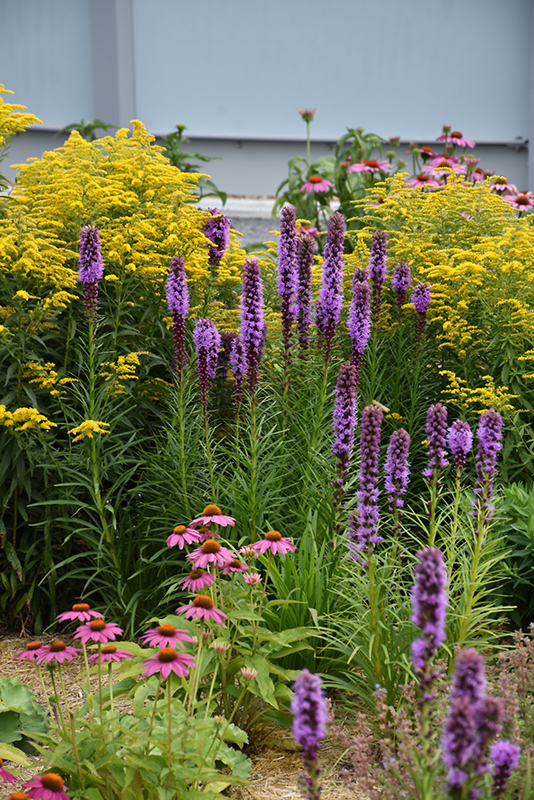Kobold Blazing Star
Liatris spicata 'Kobold'
Plant Height: 12 inches
Flower Height: 24 inches
Spread: 12 inches
Sunlight:
![]()
Hardiness Zone: 2a
Other Names: Gayfeather
Ornamental Features
Kobold Blazing Star has masses of beautiful spikes of violet flowers rising above the foliage from mid summer to early fall, which are most effective when planted in groupings. The flowers are excellent for cutting. Its grassy leaves remain green in color throughout the season.
Landscape Attributes
Kobold Blazing Star is an herbaceous perennial with a rigidly upright and towering form. It brings an extremely fine and delicate texture to the garden composition and should be used to full effect.
This plant will require occasional maintenance and upkeep, and is best cleaned up in early spring before it resumes active growth for the season. It is a good choice for attracting butterflies to your yard, but is not particularly attractive to deer who tend to leave it alone in favor of tastier treats. Gardeners should be aware of the following characteristic(s) that may warrant special consideration;
- Self-Seeding
Kobold Blazing Star is recommended for the following landscape applications;
- Mass Planting
- General Garden Use
Planting & Growing
Kobold Blazing Star will grow to be about 12 inches tall at maturity extending to 24 inches tall with the flowers, with a spread of 12 inches. It grows at a fast rate, and under ideal conditions can be expected to live for approximately 10 years. As an herbaceous perennial, this plant will usually die back to the crown each winter, and will regrow from the base each spring. Be careful not to disturb the crown in late winter when it may not be readily seen!
This plant should only be grown in full sunlight. It is very adaptable to both dry and moist locations, and should do just fine under typical garden conditions. It is considered to be drought-tolerant, and thus makes an ideal choice for a low-water garden or xeriscape application. It is not particular as to soil type, but has a definite preference for acidic soils, and is subject to chlorosis (yellowing) of the foliage in alkaline soils. It is somewhat tolerant of urban pollution. This is a selection of a native North American species. It can be propagated by division; however, as a cultivated variety, be aware that it may be subject to certain restrictions or prohibitions on propagation.
A NetPS Plant Finder tool



